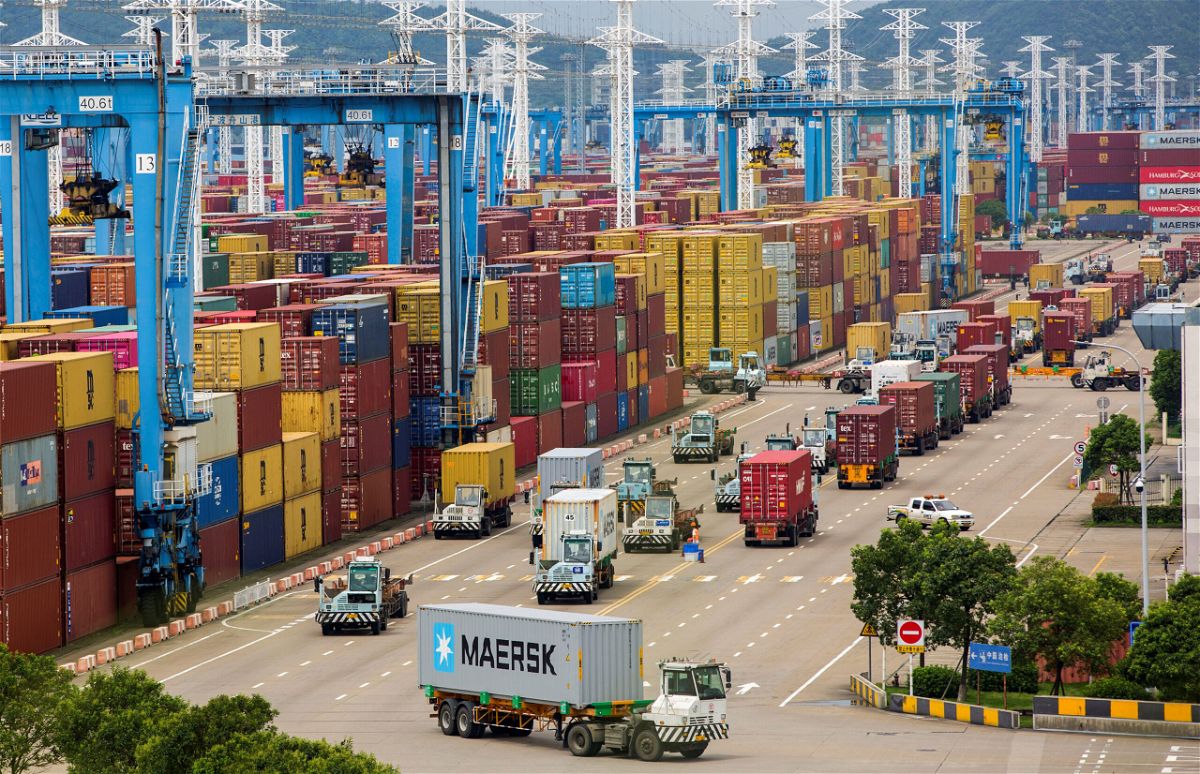The world’s third busiest container port is back but the shipping crisis isn’t over yet

The world's third busiest container port
By Michelle Toh and CNN’s Beijing bureau, CNN Business
One coronavirus case was all it took to shut down a critical part of the world’s third busiest container port.
Now, the Meishan terminal at the Ningbo-Zhoushan Port in eastern China is back up and running, according to the state-owned company that manages the port. Operations resumed at midnight, ending a two-week long suspension, Jiang Yipeng, deputy general manager of the Ningbo-Zhoushan Port Group, said at a press conference on Wednesday.
The terminal in Ningbo, which is south of Shanghai, had been shut since August 11 after a dock worker tested positive for Covid-19. That led officials to swiftly suspend container pickup service, citing a “system disruption.”
Peter Sand, chief shipping analyst at shipowner association BIMCO in Denmark, said that it could take up to 60 days for operations at the port to return to normal as workers and maritime pilots return from quarantine. That means retailers around the world will face continued disruption as they race to stock up ahead of the vital holiday shopping season.
The closure of the terminal — which accounts for about 25% of container cargo through the port, according to security consultant GardaWorld — heavily affected global trade. It disrupted other ports in China and stretched supply chains that were already suffering from recent problems at another Chinese port, ongoing container shortages, factory shutdowns in Vietnam and the lingering effects of the Suez Canal blockage in March.
Major international shipping lines, including Maersk (AMKBY), Hapag-Lloyd (HPGLY) and CMA CGM, adjusted schedules to avoid the Ningbo port, and warned customers of delays. Cargo that was not able to be diverted away from Ningbo will now begin to flow, but it could takes weeks to clear the backlog because blockages also affected trucking and railways, said BIMCO analyst Sand.
The Ningbo closure also added to bottlenecks arising from the closure in June of Yantian, a port about 50 miles north of Hong Kong, after coronavirus infections were detected among dock workers.
Global supply chains have been disrupted by fallout from the pandemic, spurring shortages of consumer products and making it more expensive for companies to ship goods where they’re needed.
The port in Ningbo has long played a crucial role. For the last 12 years, it has served as the world’s largest port by cargo tonnage, with the capacity to handle nearly 1.2 billion tons in 2020, according to China’s Ministry of Transport.
The ministry also bills it as the world’s third busiest port in terms of container traffic, handling about 28.7 million twenty-foot equivalent units (TEUs), the standard measure for freight container volume.
Sand suggested that port authorities would seek in future to strike a “better balance” between protection of local residents and the impact on the economy.
“‘Zero tolerance’ policy for imported Delta virus does not work when it comes to a big port,” he said.
— Hanna Ziady and Charles Riley contributed to this report.
The-CNN-Wire
™ & © 2021 Cable News Network, Inc., a WarnerMedia Company. All rights reserved.